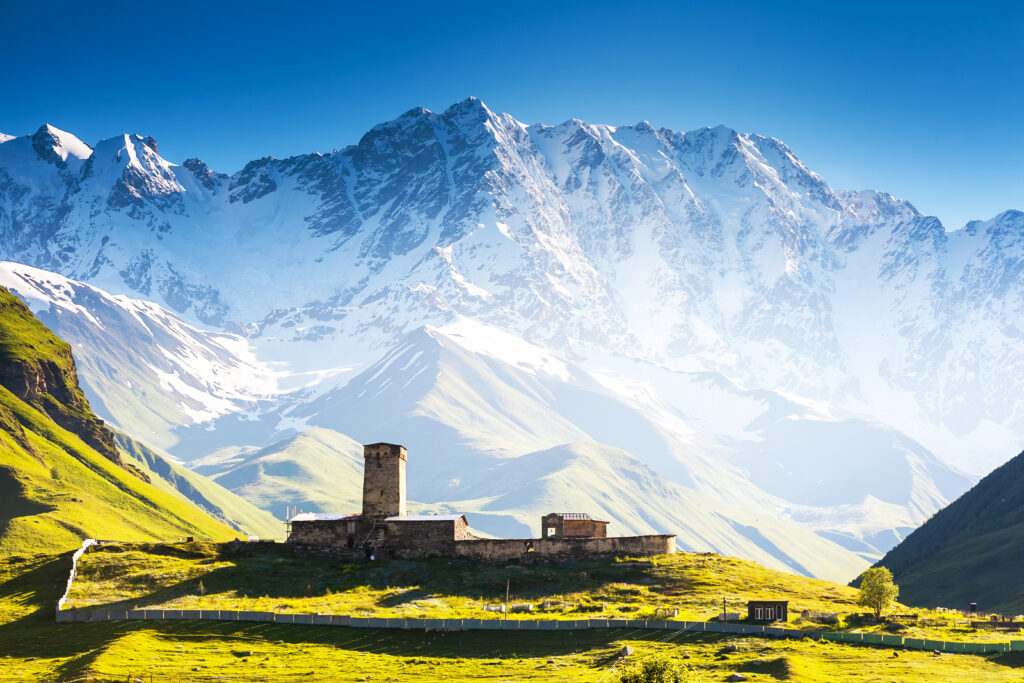Svaneti, one of the most ancient historical provinces of Georgia, is located on the southern slopes of the Caucasus. Surrounded by white-capped peaks, Svaneti is one of the most remarkable regions of Georgia, a hotpot of history steeped amidst timeless unwavering mountains.
Svaneti is particularly known for its tower settlements, their cuisine, their unique musical instruments and tradition of woodcarving. Carpenters still make incredible furniture using the same traditional decorative ornaments.
In ancient times, Svaneti was part of the Colchis Kingdom. The myth of the Greek Argonauts’ voyage to Colchis is thought to be connected to the gold of Svaneti. Svans used sheep wool to capture the gold from the rivers – the wool was fixed to a board that was placed into water, wool side up. Once removed from the water and dried, the gold would fall from the dry wool.
Svaneti periodically gained independence and had its own ruler and tribal councils. Settlements grew out of large family farms and brotherhoods were created as big families divided.
Svan religious beliefs and traditions were tied intimately to the fields. They have great respect for rituals which often feature deities protecting cattle and people, and granting fertility.
Svaneti is divided into two parts, Upper Svaneti and Lower Svaneti, separated by the Svaneti Mountain Range and running between the Enguri and Tskhenistskali Rivers. The region boasts several 4000-5000m high peaks.
At 2000 meters above sea level, the climate of Upper Svaneti is humid and cold. Temperatures in January average approximately -6 °C and16 °C in July.
The tower settlements and fortresses in Svaneti are one of its most notable attractions. Originating in the early middle ages, they mirror the austere, natural ramparts of the near impregnable terrain,erupting from the rock and cliffs around them.
Ushguli is home to the remnants of one of the most ancient fortresses of Svaneti, dating from the reign of Queen Tamar. Ushguli itself is one of the highest settlements in Europe and like the towers and churches of Svaneti, is under the protection of UNESCO.
Tourists interested in religious culture will find fine examples of wall paintings and icons from the Middle Ages in the churches around Mestia. The Church of Christ in Lagami is a good example of traditional basilica style architecture and is well known for its frescoes. Etseri and its surrounding villages are also known for their churches including one of the most dazzling, the 10th century Pkhutreri Church of the Archangels.
Most of the treasures of Svaneti can be enjoyed in the Historic and Ethnographic Museum of Mestia. Highlights include icons from the Middle Ages and late 19th century photographs of Svaneti’s landscapes and settlements that documented the daily lives of the local inhabitants.
The Latali region has earned a reputation for its talented musicians and during festivities, as well as during mourning, visitors may have the opportunity to listen to these spine-tingling polyphonic songs.
